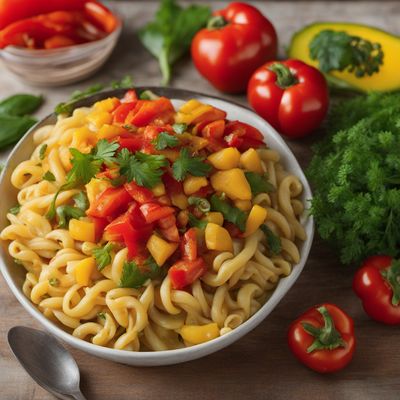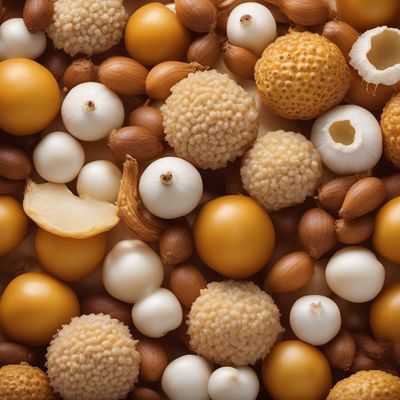
Ingredient
Akee apples
The Tropical Delicacy
Akee apples are small, pear-shaped fruits with a bright red or yellow skin. When ripe, they split open to reveal three large, shiny black seeds surrounded by soft, creamy flesh. The flesh has a mild, slightly sweet flavor reminiscent of scrambled eggs, and a buttery texture that melts in your mouth.
Origins and history
Akee apples are native to West Africa and were brought to the Caribbean during the transatlantic slave trade. They have since become a staple in Jamaican cuisine, where they are used in dishes like ackee and saltfish. Akee apples are also grown in other tropical regions, including parts of Central and South America.
Nutritional information
Akee apples are low in calories and fat, while being a good source of dietary fiber and vitamin C. However, it's important to note that the seeds and unripe fruit contain a toxin called hypoglycin, which can be harmful if consumed. Only the ripe flesh of the fruit is safe to eat.
Allergens
Akee apples are not known to be allergenic, but individuals with allergies to other fruits in the Sapindaceae family, such as lychee or rambutan, may have a cross-reactive allergy.
How to select
When selecting akee apples, look for fruits that are fully ripe and have naturally split open. The skin should be vibrant in color, without any blemishes or signs of mold. Avoid fruits that are unripe or have closed pods, as they may contain the toxic seeds.
Storage recommendations
Akee apples are highly perishable and should be consumed or refrigerated immediately after harvesting. Store them in a plastic bag or airtight container in the refrigerator, where they can last for up to a week. It's important to remove the seeds before storing, as they can release toxins into the flesh.
How to produce
Akee apples are typically grown in tropical regions with warm climates. They require well-drained soil and plenty of sunlight to thrive. While they can be challenging to grow outside of their native regions, they can be cultivated in greenhouses or as potted plants in suitable climates.
Preparation tips
To prepare akee apples, remove the skin and seeds, as they are inedible and contain toxins. The flesh can be boiled or sautéed and is commonly used in traditional Jamaican dishes like ackee and saltfish. It can also be added to salads, stir-fries, or used as a filling in pastries.
Culinary uses
Akee apples are primarily used in Caribbean cuisine, particularly in Jamaica. They are a key ingredient in the national dish of Jamaica, ackee and saltfish, where they are cooked with salted cod and various seasonings. Akee apples can also be used in salads, stews, or as a side dish with rice and peas.
Availability
Akee apples are primarily cultivated in Jamaica, as well as other Caribbean countries like Haiti and Barbados. They are also grown in some parts of Central and South America.
More ingredients from this category
Recipes using Akee apples

Ackee and Saltfish Pizza
Caribbean Delight Pizza

Bangladeshi-style Ackee and Saltfish Pizza
Spicy Fusion Delight: Bangladeshi-style Ackee and Saltfish Pizza

Guamanian Style Ackee and Saltfish
Tropical Delight: Guamanian Style Ackee and Saltfish

Jamaican Sunrise Delight
Caribbean Delicacy: Jamaican Sunrise Delight

